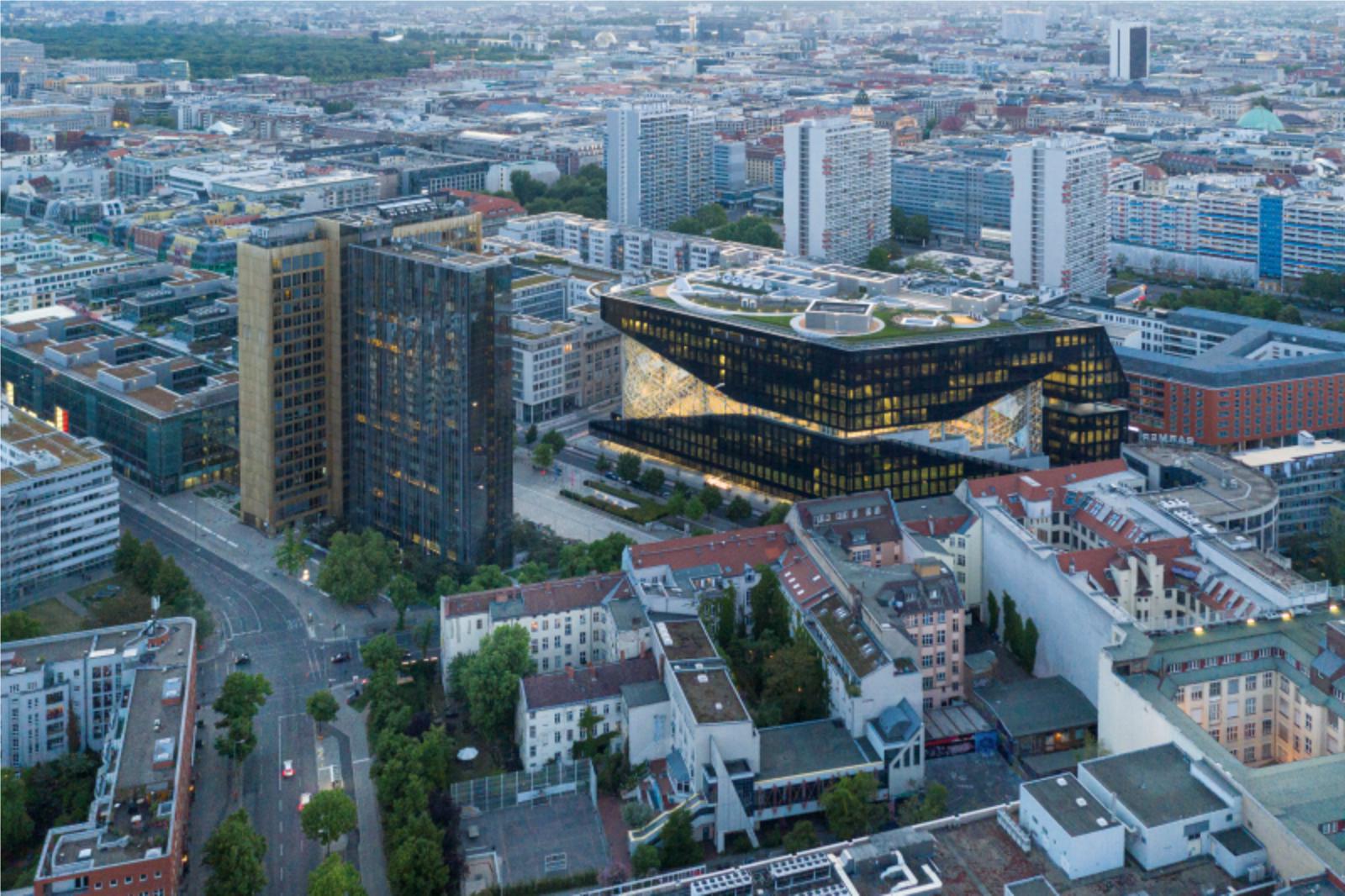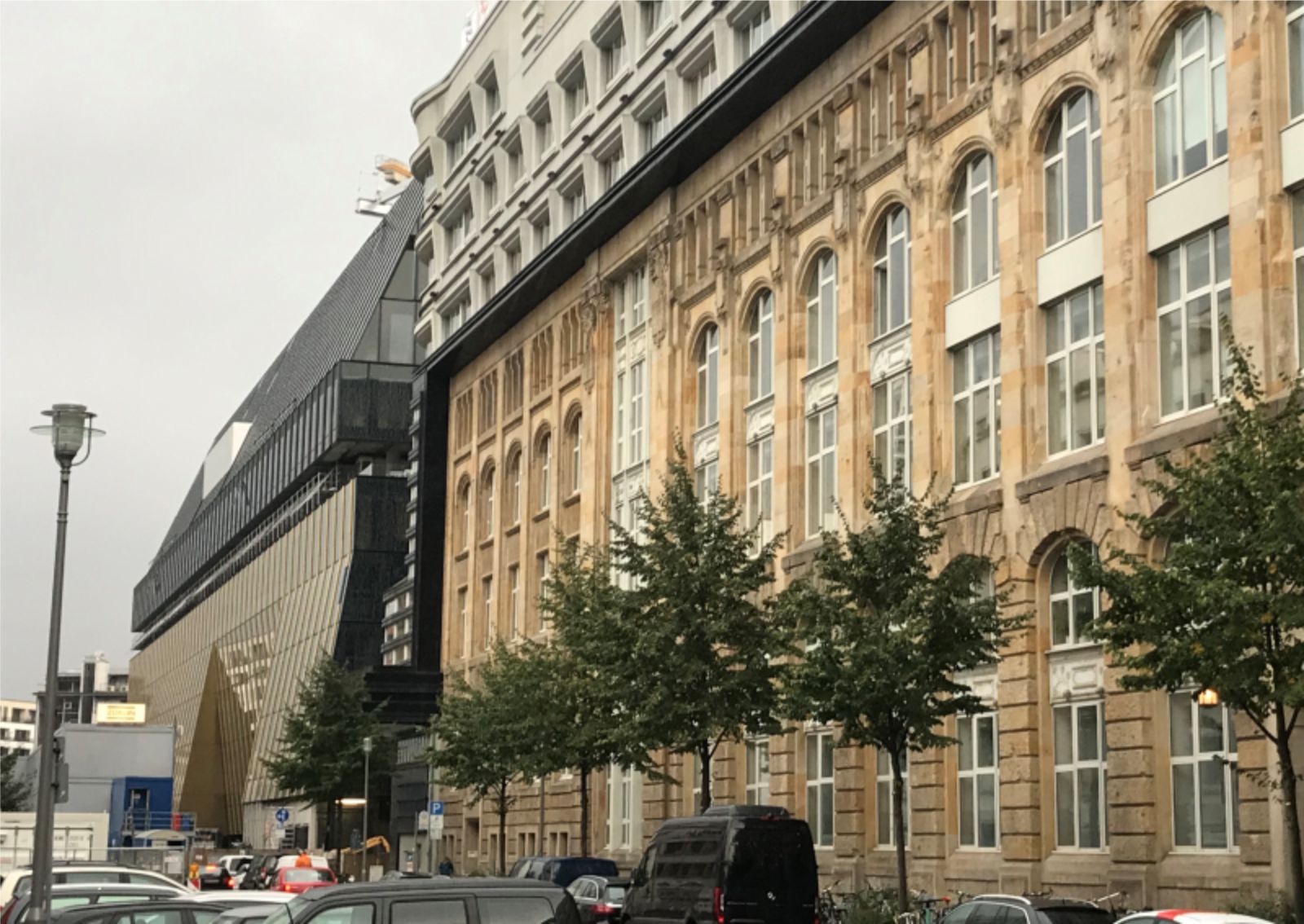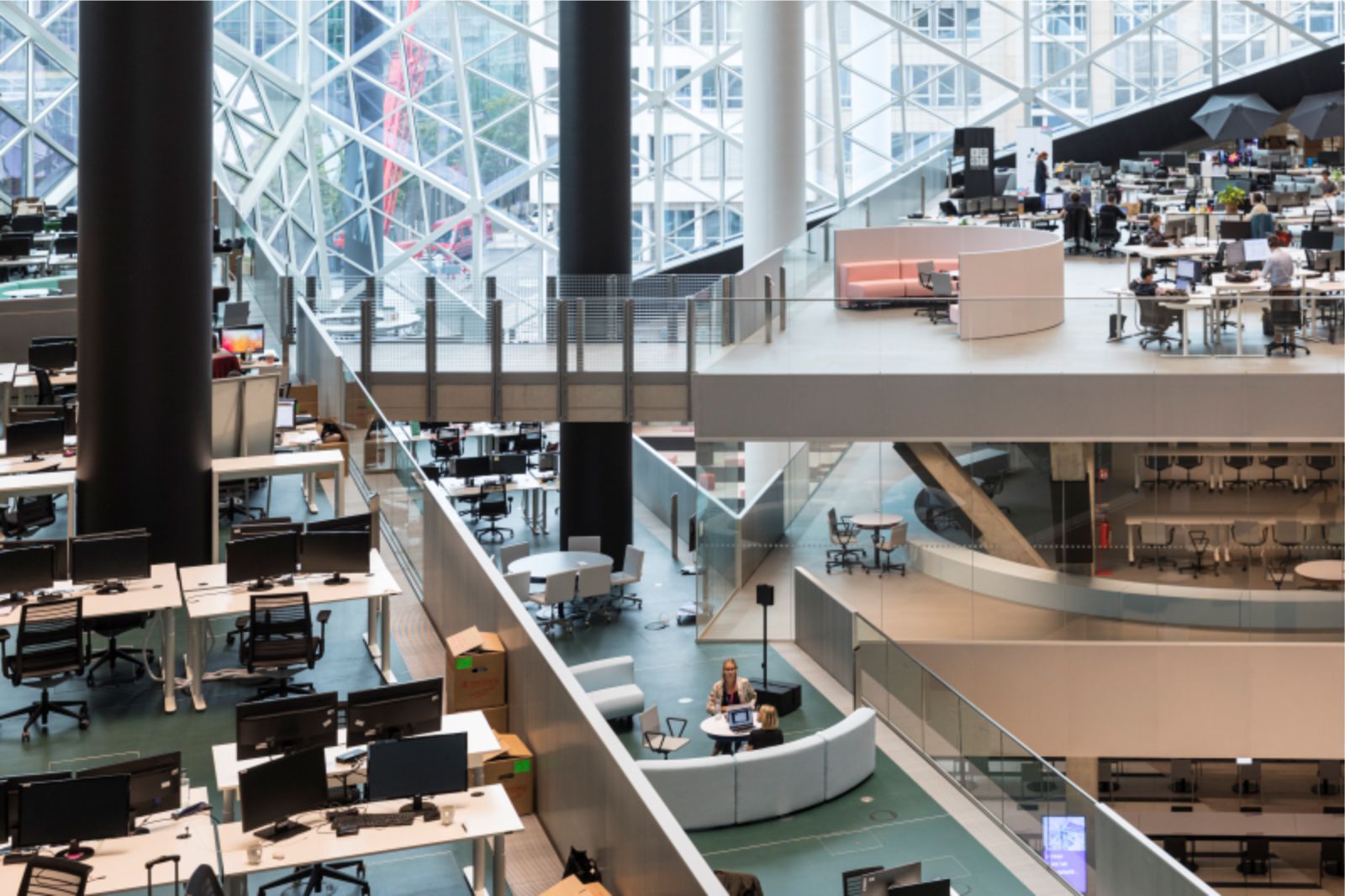Axel Springer has launched a move from print to digital media. Its new building on the campus in Berlin acts both as a symbol and a tool in this transition – a building to lure the elite of (Germany’s) digital Bohemia. Bisected by a diagonal atrium that opens up to the existing Axel Springer buildings, the essence of the design is a series of terraced floors that together form a ‘valley’ that creates an informal stage at the centre – a place to broadcast ideas to other parts of the company.
The genius of print is that it is a cheap, physical, hyper-accessible embodiment of a complex collective effort, for which so far the digital has been unable to find an equivalent. Architectural offices are similar to newspapers in that they produce complex assemblies and selections from radically different sources of information. As architects, we have experienced the advantages: speed, precision, smoothness.
But we have also suffered one crucial consequence: the relationship between the worker and his computer, which isolates him in a bubble of introverted performance, inaccessible to collective overview. In the classical newsroom, dominated by smoking, typing journalists, each inhabitant was aware of the labour and progress of his colleagues and of the collective aim: a single issue, with the deadline as a simultaneous release.
In the digital office, staring intently at a screen dampens all other forms of attention and therefore undermines the collective intelligence necessary for true innovation. We therefore have designed a building that lavishly broadcasts the work of individuals for shared analysis. The new office block is injected with a central atrium that opens up to the existing Axel Springer buildings – a new centre of the Axel Springer campus. The design was developed around a series of terraced floors that together form a digital valley.
Each floor contains a covered part as a traditional work environment, which is then uncovered on the terraces. Halfway through the building, the valley is mirrored to generate a three dimensional canopy. The common space formed by the interconnected terraces offers an alternative to the formal office space in the solid part of the building, allowing for an unprecedented expansion of the vocabulary of workspaces: a building that can absorb all the question marks of the digital future.
The public can experience the building on three levels – ground floor lobby, meeting bridge, and roof-top bar. The meeting bridge is a viewing platform from which the visitors can witness the daily functioning of the company and how it evolves. The ground floor contains studios, event and exhibition spaces, canteens and restaurants. The building is situated opposite the existing Axel Springer headquarters on Zimmerstrasse, a street which previously separated East and West Berlin, at one of the city’s most significant locations.Source by OMA.
- Location: Berlin, Germany
- Architect: OMA
- Partners in charge: Rem Koolhaas, Chris van Duijn
- Associate in charge: Katrin Betschinger
- Project Team: Philippe Braun, Antonio Barone, Paolo Caracini,Alain Fouraux, Gary Owen, Maria Aller Rey, Wael Sleiman, Valentin Bansac, Matthieu Boustany, Saida Bruckner, Felix Buttner, Emile Estourgie, Michalis Hadjistyllis, Phelan Heinsohn, Cindy Hwang, Mattia Inselvini, Athanasios Ikonomou, Hanna Jankowska, Minkoo Kang, Alexander Klufers, Tijmen Klone, Marina Kouvani, Maximilian Kurten, Hans Larsson, Wai Yiu Man, Cristina Martin de Juan, Julian Meisen, Martin Murrenhoff, Betty Ng, Edward Nicholson, Vitor Manuel Dos Santos Oliveira, Ebrahim Olia, Jerome Picard, Danny Rigter, Joanna Rozbroj, Stefanos Roimpas, Jad Semaan, Lukasz Skalec, Sandra Sinka, Thomas Shadbolt, Magdalena Stanescu, Mike Yin, Marcus Parviainen, Slavis Poczebutas, Alexandru Vilcu, Frederike Werner, Mateusz Wojcieszek
- Project Management: SMV Bauprojektsteuerung Ingenieurgesellschaft mbH
- Cost Management: Emproc GmbH
- MEP: ZWP Ingenieur-AG
- Façade: Emmer Pfenninger Partner AG
- Landscape: Inside Outside
- Structure: Arup London
- Elevators: Lerch & Bates
- Energy/Comfort: Transsolar Energietechnik GmbH
- Building Physics: knp.Bauphysik GmbH
- Acoustics: Kahle Acoustics
- Geotechnical: GuD Geotechnik und Dynamik Consult GmbH
- Lighting: les éclaireurs
- Orientation System: Büro Uebele
- Curtain design: Inside Outside
- Main contractor: Ed. Züblin AG
- Façade contractor: Dobler-Metallbau, GIG Fassaden
- Furniture: Unifor, Lensvelt
- Client: Axel Springer
- Program: Total: 57 828 m2 (above ground); 14 731 m2 (below ground): Offices: 43,534 m2, public areas (lobbies, restaurants, event spaces and meeting facilities): 8,200 m2, technical areas: 6,686 m2; parking: 11 300 m2
- Year: 2019
- Photographs: Laurian Ghinitoiu, Courtesy of OMA

Photo © Laurian Ghinitoiu 
Photo © Laurian Ghinitoiu 
Photo © Laurian Ghinitoiu 
Photo © Laurian Ghinitoiu 
Photo © Laurian Ghinitoiu 
Photo © Laurian Ghinitoiu 
Photo © Laurian Ghinitoiu 
Photo © Laurian Ghinitoiu 
Photo © Laurian Ghinitoiu 
Photo © Laurian Ghinitoiu 
Photo © Laurian Ghinitoiu 
Photo © Laurian Ghinitoiu 
Photo © Laurian Ghinitoiu 
Plans 
Model

